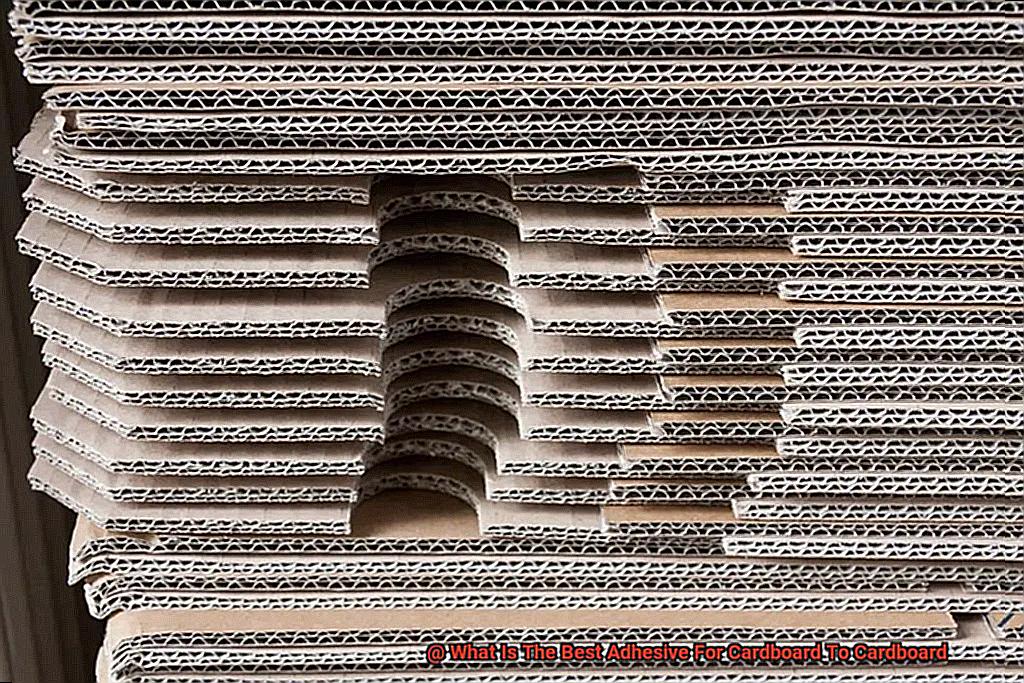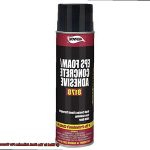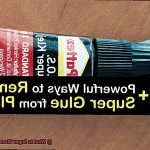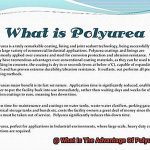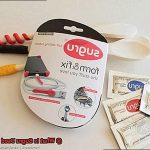Are you tired of cardboard projects falling apart?
Frustrated with glue that just doesn’t stick? Well, get ready for a game-changer.
Today, we’re diving into the wild world of adhesives to find the ultimate solution for bonding cardboard to cardboard. Whether you’re a crafting whiz or a packaging pro, this article is your ticket to unbreakable connections.
Say goodbye to flimsy failures and hello to sturdy success. So grab your glue guns and tape dispensers – it’s time to revolutionize your cardboard creations.
Let’s get started.
What is the Best Adhesive for Cardboard to Cardboard?
Contents
- 1 What is the Best Adhesive for Cardboard to Cardboard?
- 2 Regular White Glue or PVA Glue
- 3 Hot Glue
- 4 Epoxy Adhesives
- 5 Double-Sided Tape
- 6 Considerations When Choosing an Adhesive
- 7 Common Mistakes to Avoid When Applying Adhesives
- 7.1 Mistake 1: Choosing the wrong adhesive
- 7.2 Mistake 2: Neglecting surface preparation
- 7.3 Mistake 3: Uneven or inadequate adhesive coverage
- 7.4 Mistake 4: Applying excessive adhesive
- 7.5 Mistake 5: Improper clamping or pressure application
- 7.6 Mistake 6: Neglecting drying or curing time
- 7.7 Mistake 7: Overlooking environmental factors
- 7.8 Mistake 8: Improper storage practices
- 8 Conclusion
Crafting, packaging, or DIY projects involving cardboard require a strong and durable bond. With numerous adhesive options available, selecting the right one can be overwhelming. In this comprehensive guide, we will explore different types of adhesives, their properties, advantages, and disadvantages to help you make an informed decision.
White Glue or PVA Glue:
- Properties: White glue, also known as school glue or PVA glue, is affordable and dries clear. It offers a strong bond suitable for lightweight projects.
- Advantages: Non-toxic and safe for children. Ideal for crafts and small-scale applications.
- Disadvantages: Less durable than other options. Not suitable for heavy-duty or moisture-exposed projects.
Hot Glue:
- Properties: Hot glue provides a quick bond and is readily available in glue sticks used with a hot glue gun.
- Advantages: Strong bond between cardboard surfaces. Suitable for temporary or semi-permanent applications.
- Disadvantages: Visible glue strings and potential brittleness over time. Not ideal for long-lasting durability.
Epoxy Adhesives:
- Properties: Epoxy adhesives consist of a resin and a hardener that are mixed before application.
- Advantages: Extremely strong bond resistant to high temperatures and moisture. Suitable for heavy-duty applications.
- Disadvantages: Requires careful mixing and application following manufacturer’s instructions.
Double-Sided Tape:
- Properties: Double-sided tape eliminates drying time and provides an instant bond between cardboard surfaces.
- Advantages: Easy to use and offers a neat and clean bond.
- Disadvantages: May not be as strong or long-lasting as other adhesive options.
Regular White Glue or PVA Glue
When it comes to bonding cardboard to cardboard, the choice between regular white glue and PVA glue can make all the difference. Each has its own unique advantages and disadvantages that can impact the strength, durability, and overall success of your project. So, let’s dive into the details and explore the world of adhesive options.
Regular white glue, also known as school glue or liquid glue, is a versatile adhesive that has earned its place in the hearts of many crafters. With its easy application and clear drying properties, it’s no wonder why this glue is a go-to for various arts and crafts projects.
The quick drying time allows you to move forward with your creation without delay. However, keep in mind that regular white glue may not be the best option if you need a bond that can withstand heavy-duty stress and strain. Its strength lies more in lighter weight applications or projects where aesthetics take center stage.
On the other hand, PVA glue, also known as polyvinyl acetate glue, offers a stronger bond and greater durability compared to regular white glue. This water-based adhesive forms a flexible bond that can endure movement and stress, making it perfect for projects that require some muscle. Additionally, PVA glue boasts resistance to moisture, heat, and aging, ensuring that your masterpiece will stand the test of time. It does have a longer drying time than regular white glue, but this feature allows for adjustments and repositioning during the bonding process.
To sum it up, both regular white glue and PVA glue have their own strengths and weaknesses when it comes to bonding cardboard. Regular white glue is ideal for lighter weight applications and projects where aesthetics matter most.
Its quick drying time is an asset when efficiency is key. On the other hand, PVA glue offers a strong and flexible bond that can handle stress and movement. Its resistance to moisture, heat, and aging makes it a great choice for projects that need long-lasting durability.
Hot Glue
Hot glue, the superhero adhesive of the crafting world, is a versatile and powerful tool when it comes to bonding cardboard to cardboard. This thermoplastic adhesive has the incredible ability to melt when heated and solidify when cooled, creating a strong and durable bond. So grab your glue guns and let’s dive into the amazing world of hot glue.
One of the most remarkable advantages of hot glue is its speed. Unlike other glues that can take hours to fully cure, hot glue sets within minutes. It’s like a lightning bolt of adhesive power. This means you can assemble or repair your cardboard creations in a flash, perfect for those last-minute projects or when you can’t wait to see your masterpiece come together.
But don’t be fooled by its quick drying time – hot glue doesn’t sacrifice strength. It may dry fast, but it provides a bond that can handle moderate stress and handling. Your cardboard creations will stay firmly in place, ready to withstand whatever challenges come their way. It’s like having a bodyguard for your crafts.
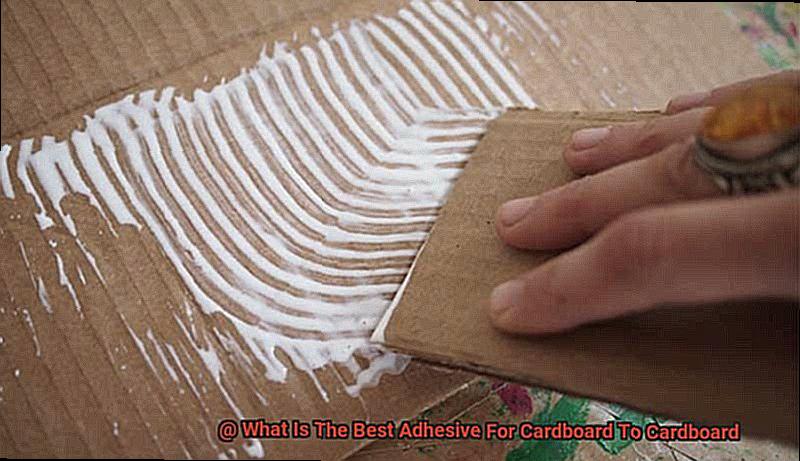
Now let’s talk about versatility. Hot glue isn’t just limited to cardboard – it can bond a wide range of materials commonly used alongside it. From fabric to paper to plastic, hot glue is your all-in-one adhesive for all your crafting needs. It’s like having a Swiss Army knife in your toolbox.
But remember, with great power comes great responsibility. When using hot glue on cardboard, make sure to set your glue gun at the right temperature to avoid scorching or overheating. Apply the glue evenly and in moderation to prevent excessive seepage or uneven bonding. You want your creation to look flawless, after all.
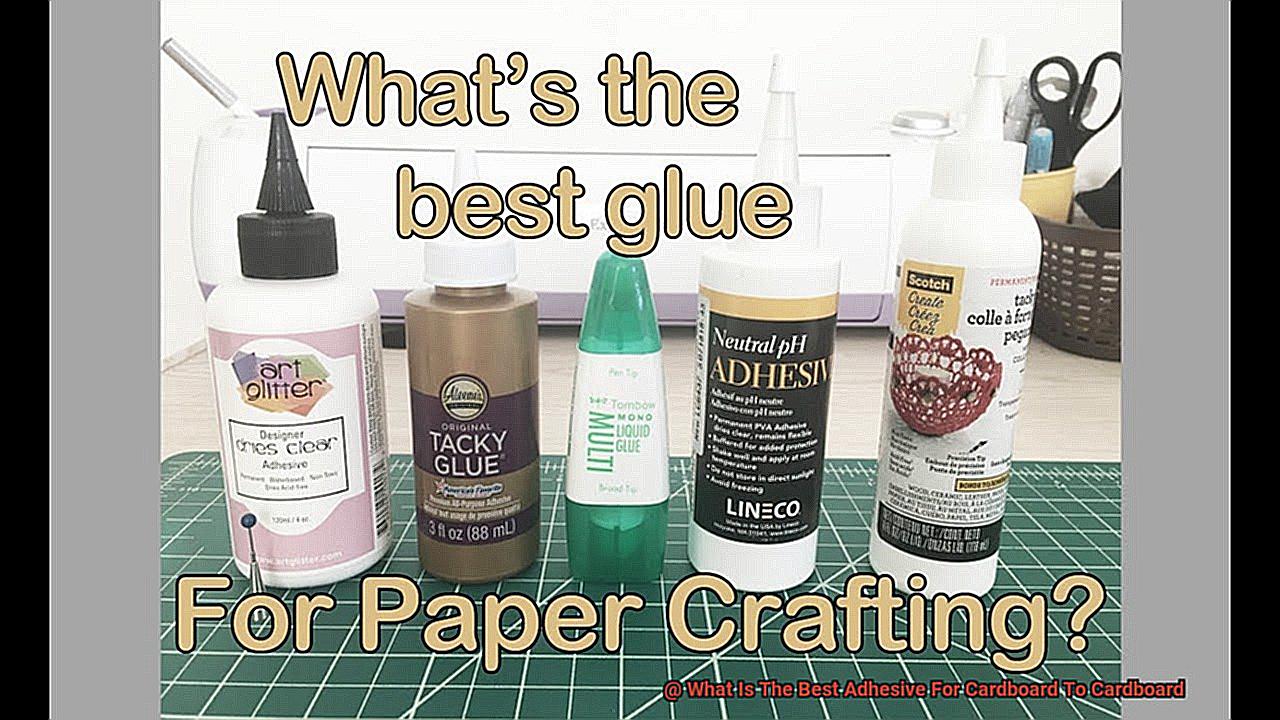
Epoxy Adhesives
Epoxy adhesives are like the superheroes of the glue world, able to hold your cardboard creations together with unwavering strength. These adhesives consist of two components: a resin and a hardener. When mixed together, a chemical reaction occurs, creating a bond that is as strong as steel (well, almost). This means even your heaviest or bulkiest cardboard pieces will stay securely attached.
But their superpowers don’t stop there. Epoxy adhesives also have impressive resistance to moisture, chemicals, and temperature fluctuations. So whether you’re displaying your cardboard creation outdoors or in challenging environments, epoxy adhesives won’t let you down.
However, even superheroes have their weaknesses. Proper surface preparation is crucial for optimal bonding. Cleaning the cardboard surfaces thoroughly and slightly roughening them enhances adhesion. Additionally, following the manufacturer’s instructions for mixing ratios and curing times is essential. Improper mixing or insufficient curing time can weaken the bond.
Time is also a factor to consider as epoxy adhesives set quickly. But superheroes thrive under pressure, right?
It’s worth noting that epoxy adhesives may not be suitable for every cardboard-to-cardboard bonding application. Factors such as the type of cardboard, desired flexibility of the bond, and intended use of the bonded materials should be taken into account.
Double-Sided Tape
Today, we are embarking on an exciting journey into the world of double-sided tape and discovering its unrivaled benefits when it comes to bonding two cardboard surfaces together. So, grab your scissors and buckle up as we explore the wonders of this adhesive marvel.
Simplicity at Its Finest:
When it comes to convenience, nothing beats double-sided tape. Say goodbye to messy liquid adhesives and tedious waiting times for glue to dry. With double-sided tape, all it takes is a simple peel of the backing, a firm application to your cardboard surfaces, and voila. In a matter of seconds, you have a secure bond that is ready to withstand any creative endeavor.
A Mighty Bonding Force:
Do not underestimate the power of double-sided tape. Although it may appear thin and unassuming, it possesses an incredible adhesion prowess. Whether you are mounting posters or attaching lightweight objects to cardboard, this tape holds its ground admirably under moderate stress or weight.
The Chameleon of Adhesives:
Double-sided tape is the ultimate jack-of-all-trades adhesive. It effortlessly bonds with various types of cardboard, including the rugged corrugated variety, chipboard with its smooth surface, or delicate paperboard. No matter what type of cardboard your project demands, this adhesive guarantees a secure and reliable bond that will endure the test of time.
Choosing Your Perfect Match:
Selecting the ideal double-sided tape for your cardboard bonding escapades requires careful consideration. Take note of the thickness and width that align with your project’s requirements. Thicker tapes provide robust bonding capabilities while wider tapes offer enhanced coverage and stability. Additionally, pay attention to the adhesive strength—some tapes boast stronger adhesives for unparalleled durability.
Unleash Your Inner Hercules:
For those heavyweight cardboard missions that require a touch of Herculean strength, fret not. Some double-sided tapes are specifically engineered for tough applications. These fortified tapes come equipped with additional layers or resilient fibers, granting them the power to withstand even the most demanding endeavors with ease.
A Bond That Lasts:
One crucial aspect to bear in mind is that once double-sided tape is applied and bonded, removing it without damaging the cardboard can be quite the challenge. Therefore, exercise caution when positioning the tape before committing to its steadfast embrace.
Considerations When Choosing an Adhesive
When it comes to selecting the perfect adhesive for bonding cardboard, there are several key considerations to keep in mind. Let’s dive into the world of adhesives and explore these factors in more detail.
First and foremost, strength and durability are paramount. Cardboard is a porous and fibrous material, so you need an adhesive that can create a long-lasting bond. Look for adhesives specifically designed for bonding cardboard or paper materials, as they are formulated to provide optimal strength and durability.
Next, consider the drying time of the adhesive. Waiting for glue to dry can be frustrating, especially when you’re on a tight deadline. Take into account the time constraints of your project and choose an adhesive with a drying time that suits your needs. Fast-drying adhesives may save you time, but be careful not to sacrifice proper positioning and alignment of your cardboard pieces.
The application method is another important consideration. There are various forms of adhesives available, such as liquid glues, glue sticks, and adhesive tapes. Liquid glues offer versatility and precision application, while glue sticks provide convenience and mess-free bonding. And if you’re in a hurry, adhesive tapes offer instant bonding without any waiting time.
Flexibility is crucial when it comes to cardboard-to-cardboard bonding. Cardboard can bend and fold in certain applications, so you need an adhesive that can withstand these movements. Look for adhesives with good flexibility and elasticity to ensure your bond remains intact even under stress.
Safety should always be a priority. Opt for non-toxic adhesives that are safe to use on cardboard materials, especially if you’re working in an enclosed space or around children.
Moisture resistance is also important depending on your project’s intended use. If your cardboard creation will be exposed to outdoor elements or humidity, choose an adhesive that can withstand moisture without weakening or deteriorating over time.
Last but not least, consider ease of use and cleanup. Some adhesives require special tools or techniques, while others can be easily applied with minimal effort. Look for adhesives with water washable or solvent-free formulas to avoid any messy residue or damage to your precious cardboard creations.
Common Mistakes to Avoid When Applying Adhesives
Adhesives are the unsung heroes of the crafting world, bonding and fortifying our cardboard creations. Like any superhero, adhesives have their limits. To ensure your projects withstand the test of time, it’s crucial to avoid common mistakes when applying adhesives. In this article, we will delve into these missteps and provide you with valuable tips to guarantee a sturdy and reliable bond every time.
Mistake 1: Choosing the wrong adhesive
Selecting an adhesive specifically designed for cardboard is paramount. The wrong adhesive can result in feeble bonds or adhesive failure. Look for adhesives explicitly labeled for use on cardboard to ensure a durable bond that will endure.
Mistake 2: Neglecting surface preparation
Properly preparing the cardboard surface is vital for success. Rid the surface of dirt, dust, and grease before applying adhesive. A pristine and dry surface allows the adhesive to adhere securely, guaranteeing a strong bond that will stand the test of time.
Mistake 3: Uneven or inadequate adhesive coverage
Applying adhesive unevenly or failing to cover the entire bonding area can lead to incomplete bonding and weak joints. Employ a brush, roller, or applicator to ensure consistent and thorough coverage across the entire surface, leaving no room for subpar bonds.
Mistake 4: Applying excessive adhesive
While achieving sufficient coverage is crucial, an excessive amount of adhesive can create messy joints and uneven surfaces. Follow the manufacturer’s recommended guidelines to avoid over-application, resulting in neat and flawless bonds.
Mistake 5: Improper clamping or pressure application
Proper clamping or applying adequate pressure is the key to a strong bond between cardboard pieces. Adhere to the manufacturer’s instructions regarding clamping time and pressure to achieve optimal results. Insufficient pressure or improper clamping tools can lead to weak bonds that easily crumble.
Mistake 6: Neglecting drying or curing time
Different adhesives require varying amounts of drying or curing time. Allotting sufficient time for the adhesive to set before handling or subjecting it to stress is essential. Ignoring these recommended times may result in premature bond failure or weakened joints, sabotaging your hard work.
Mistake 7: Overlooking environmental factors
Temperature and humidity can significantly impact adhesive performance. Take these factors into account when applying adhesives to cardboard. Extremes in temperature or high humidity levels can affect the drying or curing process, compromising the bond’s strength.
Mistake 8: Improper storage practices
Properly storing adhesives according to the manufacturer’s instructions ensures their effectiveness. Mishandling, exposing adhesives to extreme temperatures, or prolonged air exposure can alter their properties, diminishing bonding strength and leading to disappointment.
P–8TLM_SxE” >
Conclusion
In conclusion, when it comes to bonding cardboard to cardboard, you have a multitude of adhesive options at your disposal. Regular white glue or PVA glue is a versatile and budget-friendly choice that works well for lightweight projects. Not only does it dry quickly, but it’s also safe for little ones to use. However, keep in mind that it may not hold up as well in heavy-duty situations or when exposed to moisture.
If you’re looking for a fast and flexible solution, hot glue is a popular go-to. It sets in mere minutes and creates a sturdy bond between cardboard surfaces. Just be aware that it can leave behind unsightly glue strings and may become brittle over time.
For those seeking an adhesive that can withstand extreme conditions, epoxy adhesives are the way to go. They offer an incredibly strong bond that can handle high temperatures and moisture with ease. However, they do require careful mixing and application according to the manufacturer’s instructions.
If convenience is key for you, double-sided tape is the answer. This handy adhesive provides an instant bond between cardboard surfaces without any mess or fuss. Keep in mind though that it may not be as durable or long-lasting as other options available.
When selecting your adhesive of choice, don’t forget to consider factors such as strength, drying time, application method, flexibility, safety precautions, moisture resistance, ease of use, and cleanup requirements. Additionally, be sure to avoid common mishaps like using the wrong adhesive or neglecting proper surface preparation. Uneven or insufficient coverage of adhesive, excessive application amounts, improper clamping or pressure techniques, ignoring drying or curing times, overlooking environmental factors, and improper storage practices should also be avoided.
By choosing the right adhesive for your specific project needs and taking care to avoid these common mistakes during application, you can ensure that your cardboard creations stand strong against the test of time.

